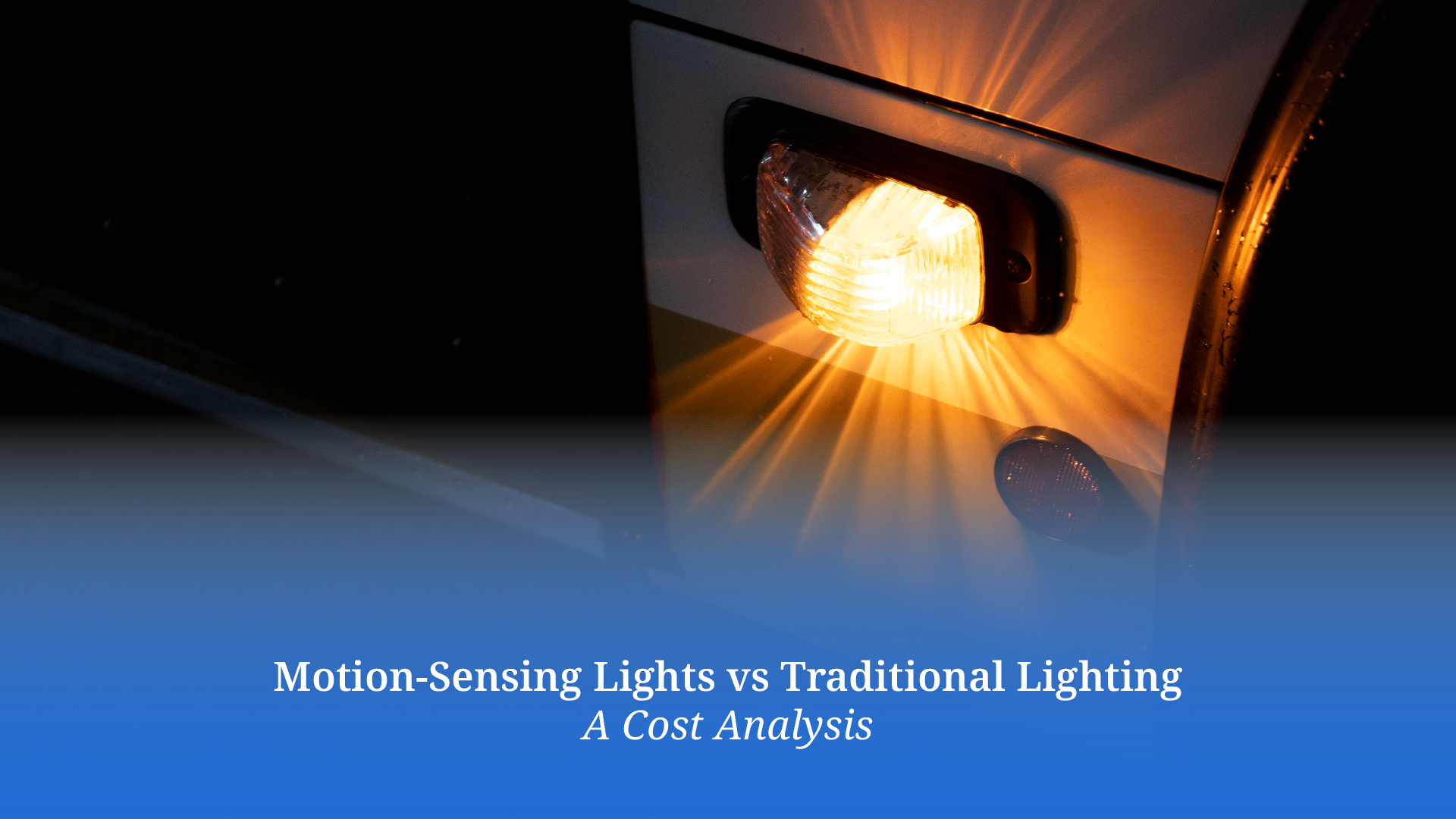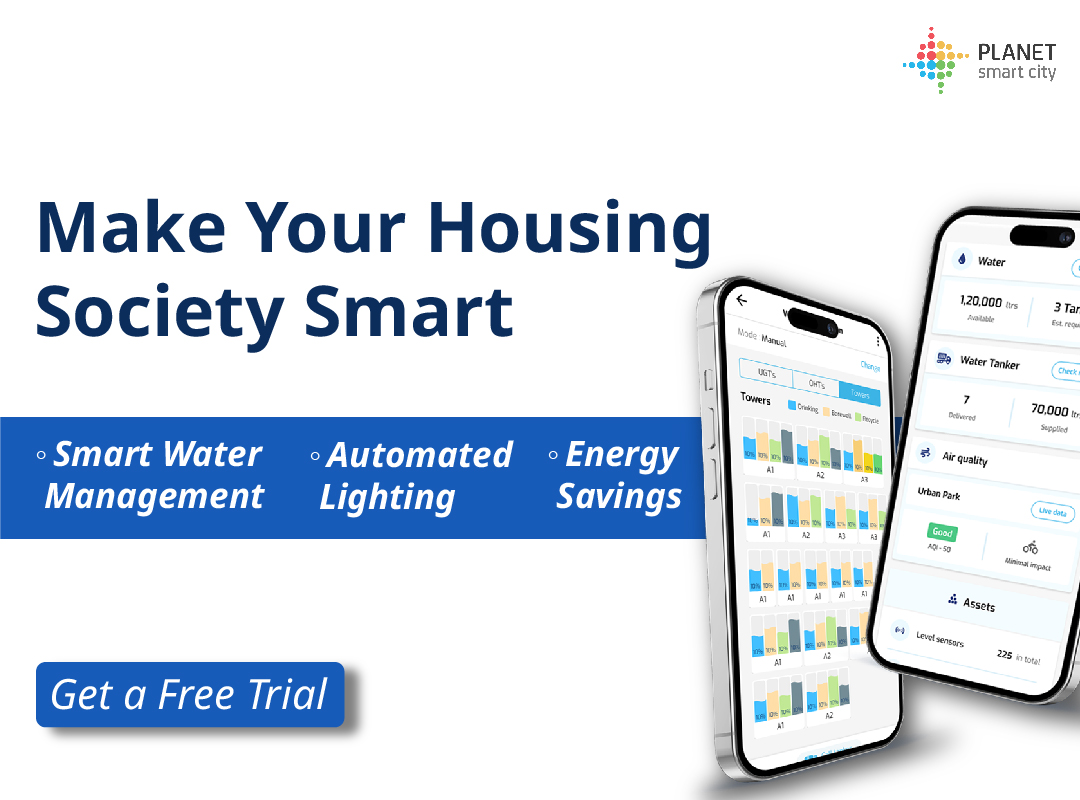Motion-Sensing Lights vs Traditional Lighting: A Cost Analysis

Lighting is a significant operational expense for many housing societies. As societies strive for cost optimisation, exploring more energy-efficient alternatives to traditional lighting has become crucial. Among the most discussed options today are motion-sensing lights. In this article, we shall examine the cost implications of both systems and explore the non-monetary benefits they bring.
Understanding the Basics of Lighting: Traditional vs. Motion-Sensing
Before comparing costs, it’s essential to understand what each type of lighting system entails.
-
What Are Traditional Lights?
Traditional lighting systems, typically incandescent, fluorescent, or halogen bulbs, have been the go-to solution for many years. These operate continuously, providing consistent illumination as long as they are switched on. But it did not take into account whether the space is occupied or not. This made them less efficient, especially when left on unnecessarily.
Today, even many traditional setups have shifted to standalone LED bulbs, which offer better energy efficiency. However, they still depend on manual operation and can remain switched on when not required.
-
What Are Motion-Sensing Lights?
Motion-sensing lights, on the other hand, are equipped with sensors that detect movement in the vicinity. When motion is sensed, they automatically brighten to full illumination. Once the area is vacated, they dim to a lower intensity after a preset period. Most modern motion-sensing lights come with built-in energy-efficient LEDs, helping reduce electricity usage further compared to older lighting systems.


Cost Analysis Breakdown: Understanding the Financial Differences
Now that we understand what each lighting system entails, let’s break down the costs associated with each.
-
Initial Investment Comparison
When comparing initial investments, traditional lights are generally cheaper to purchase and install. Motion-sensing lights, however, tend to have a higher upfront cost due to the added sensor technology and built-in energy-efficient LEDs.
-
Energy Consumption & Monthly Costs
One of the most significant benefits of motion-sensing lights is their ability to reduce energy consumption. Traditional lights can stay on for hours, even when not in use. In contrast, motion lights are activated only when needed, cutting down on electricity wastage significantly.
-
Maintenance Costs
When it comes to maintenance, traditional lights may require more frequent replacement, especially incandescent bulbs that have shorter lifespans. Motion-sensing lights, although more durable, require regular maintenance to ensure the sensors remain functional, and the LEDs maintain optimal performance. However, they use LED technology, which tends to have longer lifespans than the traditional option, meaning fewer replacements are needed over the years.
Beyond the Costs: Non-Monetary Benefits of Motion-Sensing Lights
While cost is a major factor in deciding between traditional and motion-sensing lighting, several non-monetary benefits should also be considered.
-
Enhanced Safety
Motion-sensing lights contribute to visibility and added security in housing societies. By automatically illuminating areas when movement is detected, they help reduce the chances of accidents and may discourage unauthorised activity.
-
Convenience
The automatic operation of motion-sensing lights provides unmatched convenience. Residents do not need to manually switch lights on or off, as the lights brighten when movement is detected and dim after a period of inactivity. This is particularly useful in shared spaces.
-
Environmental Impact
Motion-sensing lights reduce the carbon footprint by cutting down on unnecessary energy consumption. By using less electricity and utilising longer-lasting LEDs, these lights are a step toward more sustainable living.
How Does Planet Smart City Streamline Smart Lighting for Housing Societies?
At Planet Smart City, we provide motion-sensing options designed to optimise lighting in residential communities. Here’s how we can serve you:
-
Cost Savings and Energy Efficiency
Our motion-sensing lights, equipped with auto-dimming technology, help lower monthly power usage and costs compared to non-automated lighting systems. In several implementations, housing societies have reported recovering their investment in as little as 3–5 months, depending on usage patterns and layout. Additionally, some societies have achieved returns on their investment of up to 120% within the first year through energy savings alone.
-
Flexible Integration with Existing Systems
Another standout feature is our flexibility. We offer free integration with a housing society’s existing lighting infrastructure, wherever feasible. This enables a smooth transition to smart lighting without requiring a complete overhaul of the system. This way, we ensure minimal disruption and cost-effective implementation.
-
Customised Solutions and Scalability
We offer tailored solutions to meet the unique needs of each housing society. Whether it’s a small community or a large residential complex, our services are scalable and adaptable to accommodate your specific requirements.
-
Intelligent Lighting Solutions
Apart from motion-sensing lights, we also offer Intelligent Lighting Solutions that work through Planet SIM. Here’s how it works:
- You can create light schedules based on sunset/sunrise times.
- Residents can access control systems that manage the entire lighting system from our single platform – Planet SIM.
- Dashboards provide a clear visualisation of lighting operations. This makes it easy to track and monitor energy consumption.
- Alerts can be configured to notify residents or management teams when lighting automations are activated. This ensures complete transparency in system operations.
At Planet Smart City, we are committed to revolutionising the way housing societies manage their lighting systems. Get in touch with us now to learn how we can help optimise your community’s lighting for greater efficiency and cost savings. Be a part of this transformation today!




